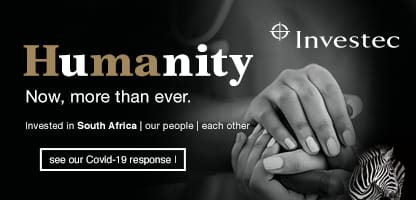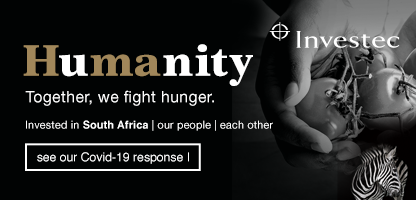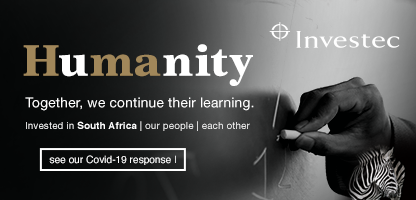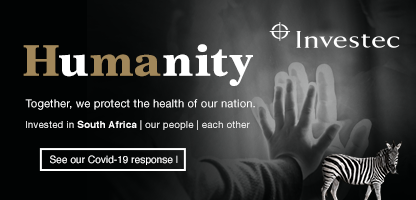Receive Focus insights straight to your inbox
Is Alexa, Amazon’s voice-driven computer, a threat or an enabler? The answer is complex. In a nutshell, it depends. In a deductive reasoning contest, the human stands little chance. Healthcare, however, is about more than working out a diagnosis from a rigid set of symptoms and physiological signs.
In a world of abstractive reasoning, the medical practitioner ought to retain some usefulness. Nevertheless, technology will probably change the doctor’s role, for the better of all.
Technological advancements in healthcare have always been alluring. Science-based fiction books and films have often sensationalised such ideas: a scanning machine that tells one the diagnosis promptly and with certainty; a precursor cell that can be made to develop into any organ to replace a diseased one; a laser chamber that can cure all ailments. Sadly it has mostly remained fiction, not because there is no technological progress in medicine, but because of multiple other hurdles.
Healthcare is tightly regulated. Before a new diagnostic or therapeutic is put to human use, it must be thoroughly tested and then approved by a regulatory institution. This brings complexity, risk and cost. Innovation in healthcare is expensive and many promising technologies have perished along the regulatory pathway. Ethical dilemmas have also stymied progress – how much meddling with the human gene is acceptable?
Historically, newly-minted doctors take the Hippocratic Oath to do no harm. Consequently, interventions that are not ‘tried and tested’ can often be viewed warily. Time, and perhaps vigorous promotion, aids adoption. But this may take a long time and penetration rates may be low. Uncertainty of the commercial success and hence the length of payback periods may discourage investment, thus stifling technological progress.
Training is the final hurdle of note. Medical professionals are trained over many years. One can see how they would get comfortable with operating within the bounds of their training - whether it be with instruments, medicines or procedures. A new way of operating would require new training, plenty of practice and solid evidence that it is better than the traditional way. ‘Fashionable’ is certainly not a watchword in medical therapy circles.
Technology’s progress
Many of these barriers are shrinking and headwinds abating. Technological adoption in society has increased, thanks to increased computing power, a younger generation of people willing to embrace technology-driven change and society’s relentless march to improve productivity.
And for once, healthcare has not been left behind. Technology is permeating every area of the healthcare continuum: from prevention, diagnostics, treatment, follow-up and maintenance, through to palliative care. A digital revolution is brewing, supported by wireless sensors and devices, mobile connectivity, social networking, genomics, imaging, data analytics and health information system advancements.
Technological adoption in society has increased...And for once, healthcare has not been left behind.
Technology-driven improvements in healthcare spawn many investment opportunities. We see the potential for both enablers and providers of healthcare services. All along the healthcare services spectrum new companies and alliances are being formed. There are opportunities for small companies and blue chip multi-billion dollar enterprises alike.
Digital spending in the US alone has been growing at a 21% compound annual growth rate since 2010, according to The Economist. There will be incumbent healthcare players and new entrants: Google, Amazon and Microsoft, among others. New business models will emerge, such as UnitedHealth, a US medical insurance company that has a prevention programme connecting pre-diabetics with special coaches at certain gyms. One is spoilt for choice. We, however, focus our attention on profitable enterprises with enviable economics.
Delivering healthcare remotely
Telehealth is an emerging theme. There is a concerted drive to integrate healthcare systems and digitalise patient data – think telecare (medical advice offered remotely) and telemedicine (automatic dispatch of the right medicines depending on data sent to the doctor from ongoing monitoring of relevant disease parameters).
In recent months the US Food and Drug Administration (FDA) has approved 36 connected health apps and devices. Babylon, a UK start-up whose medical artificial intelligence (AI) technology is being tested in the NHS, reckons that 85% of medical consultations do not need to be held in person.
One prominent manifestation is teleradiology: off-site analysis and interpretation of scans and X-rays. Teleradiology may be nothing new but it has had a shot in the arm from technological advancements. Traditionally X-rays and scans have been interpreted on site. The film or scan is in hardcopy format or on a computing system but not at the same place as the all-important background information.
One prominent manifestation is teleradiology: off-site analysis and interpretation of scans.
The interpretation of a white blob on a chest X-ray, which could be harmless fluid collection or cancer, often requires the context of a person’s symptoms and signs. Having systems powerful enough not only to have timely (and historical) background patient data, but to combine it with the latest scan and all previous tests, was a far-fetched ideal that has now been attained. Medica, a UK medical devices company, is blazing that trail in the NHS.
Teleradiology saves time, reduces error rates and cuts costs, ultimately saving lives. Enabling analysis of radiology-based diagnostic data to be done off-site is particularly important after-hours and for emergencies. And it paves the way for smoother collaboration across medical specialities and geographies.
Obesity is threatening to be a significant healthcare burden for many years to come. A common consequence of obesity is diabetes mellitus. The management of diabetes is complex, expensive and riddled with the risk of potentially fatal mistakes.
Treatment frequently involves pricking oneself several times a day to measure blood sugar; injecting the requisite amount of insulin, and managing complications often too late given the insidious nature of the disease. Medtronic, a US medical devices company, is pioneering an artificial kidney. This involves a system embedded under the skin that continuously monitors glucose, interprets that data, works out how much insulin is required, and instructs an insulin pump to deliver the dose.
The data may be sent periodically to one’s doctor to aid future care. Predictive analytics may be deployed to alert patients of the high risk of contracting a particular disease or complication. The benefits of convenience, efficiency and cost are apparent.
Transforming drug development
The approval of a new medicine is the culmination of an arduous, complex and costly process that often takes a decade or longer. Traditionally, a drug target is identified – for example, a defective gene or misfiring enzyme. Powerful machines are then used to bombard the target with hundreds of thousands of compounds to find the ones that have an effect.
This whittles down the number to, say, a few hundred. These are then taken into animal models to further narrow down the list. Three or four are then taken into human clinical testing and hopefully, ten years and one billion dollars later, one makes it to the market. Commercial success is still not guaranteed.
This conventional approach is being transformed by technology. Artificial intelligence is being deployed to power drug development platforms. Instead of indiscriminate bombardment of a target, molecules are designed and modelled around the target. An iterative process is used to perfect the medicine over time: increase potency, optimise pharmacodynamics (how a drug is metabolised in the body) and minimise side effects.
Verseon, a US technology-based pharmaceutical company, has used its computational drug discovery platform to design novel therapeutics in the areas of anticoagulation, diabetic macular oedema, hereditary angioedema and cancer.
The impact of technological change on healthcare is becoming more apparent to the general public, although it has been more visible to insiders. Life expectancy has increased partly due to improvements in healthcare. Certain diseases that had a high mortality rate in the past, such as HIV/AIDS, are now more manageable, so we can appreciate the improvements. Concerns over accuracy, security and privacy remain but are manageable.
We envisage a digitally-led disruption with more front-line changes: getting one’s DNA sequenced while enjoying a cup of coffee in the doctor’s waiting area; seamless change in prescription mid-course if the current one is not working or side effects need to be mitigated, and prosthetics that retain sensation and dexterity.
We envisage getting one's DNA sequeced while enjoying a cup of coffee in the doctor's waiting area.
We are in the vanguard of significant change to the delivery of healthcare services. Therein lies an opportunity to support such developments financially while also profiting from the fruits of the investments, without taking undue risk.
The evolution in digitalisation of healthcare has now reached escape velocity and a revolution is underway. So, can an algorithm replace one’s doctor? Probably not. But it can certainly help to deliver a better service and outcome.








